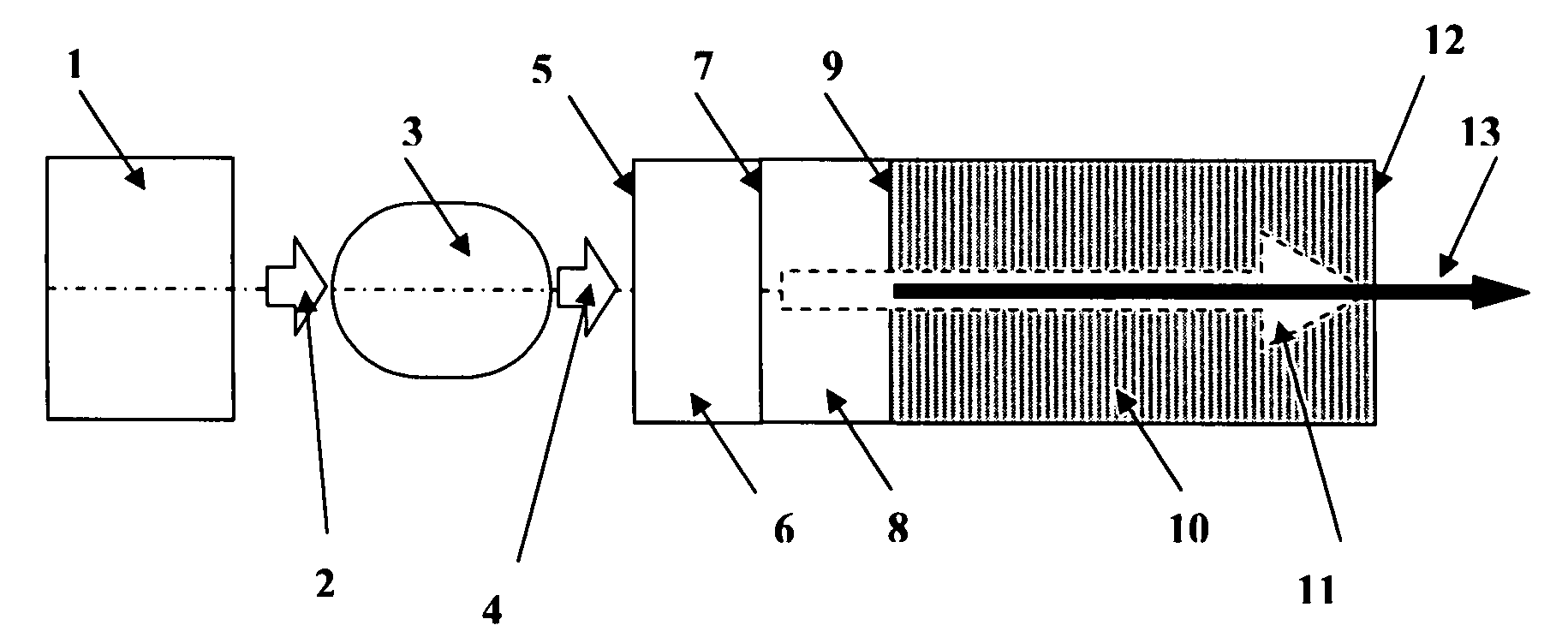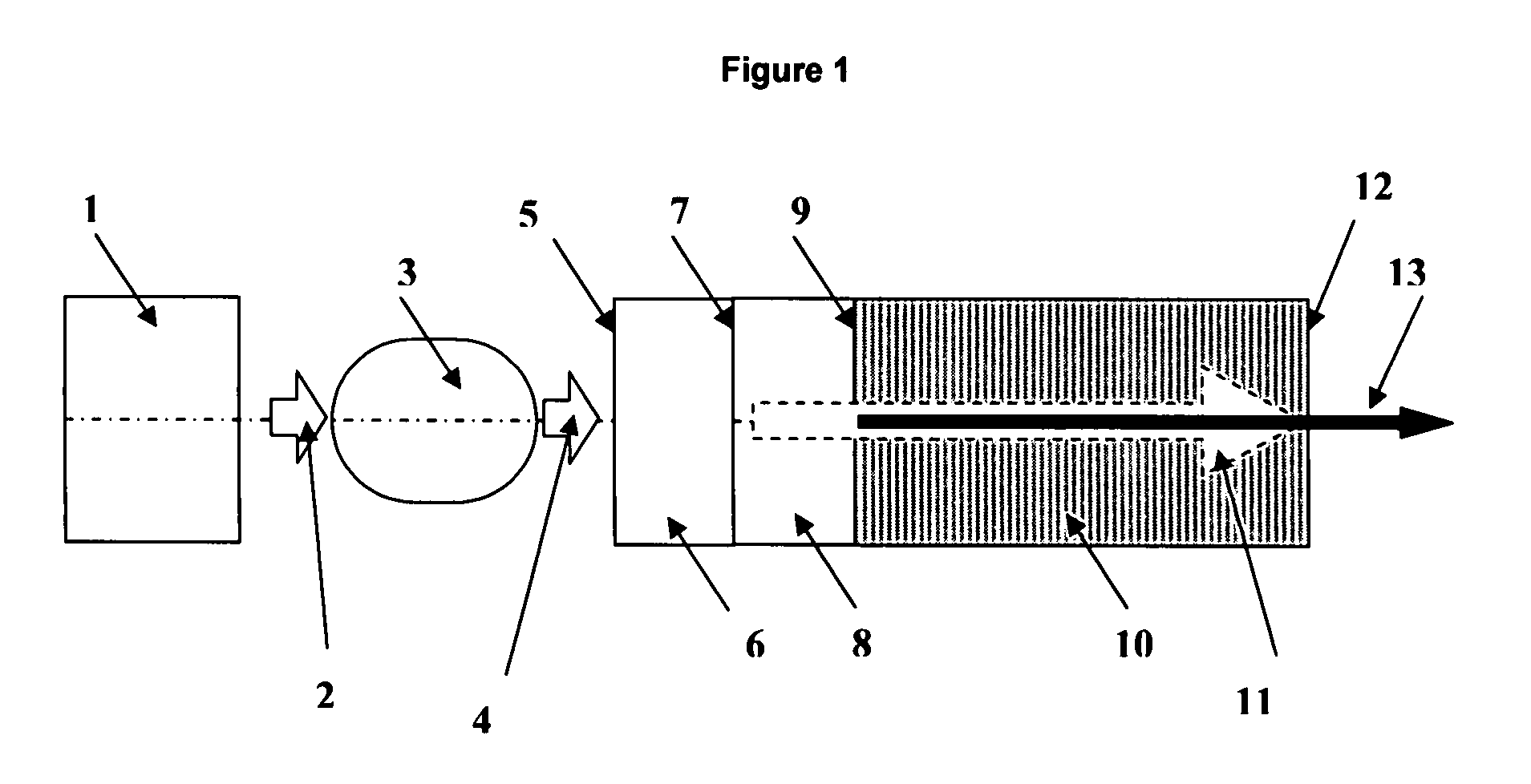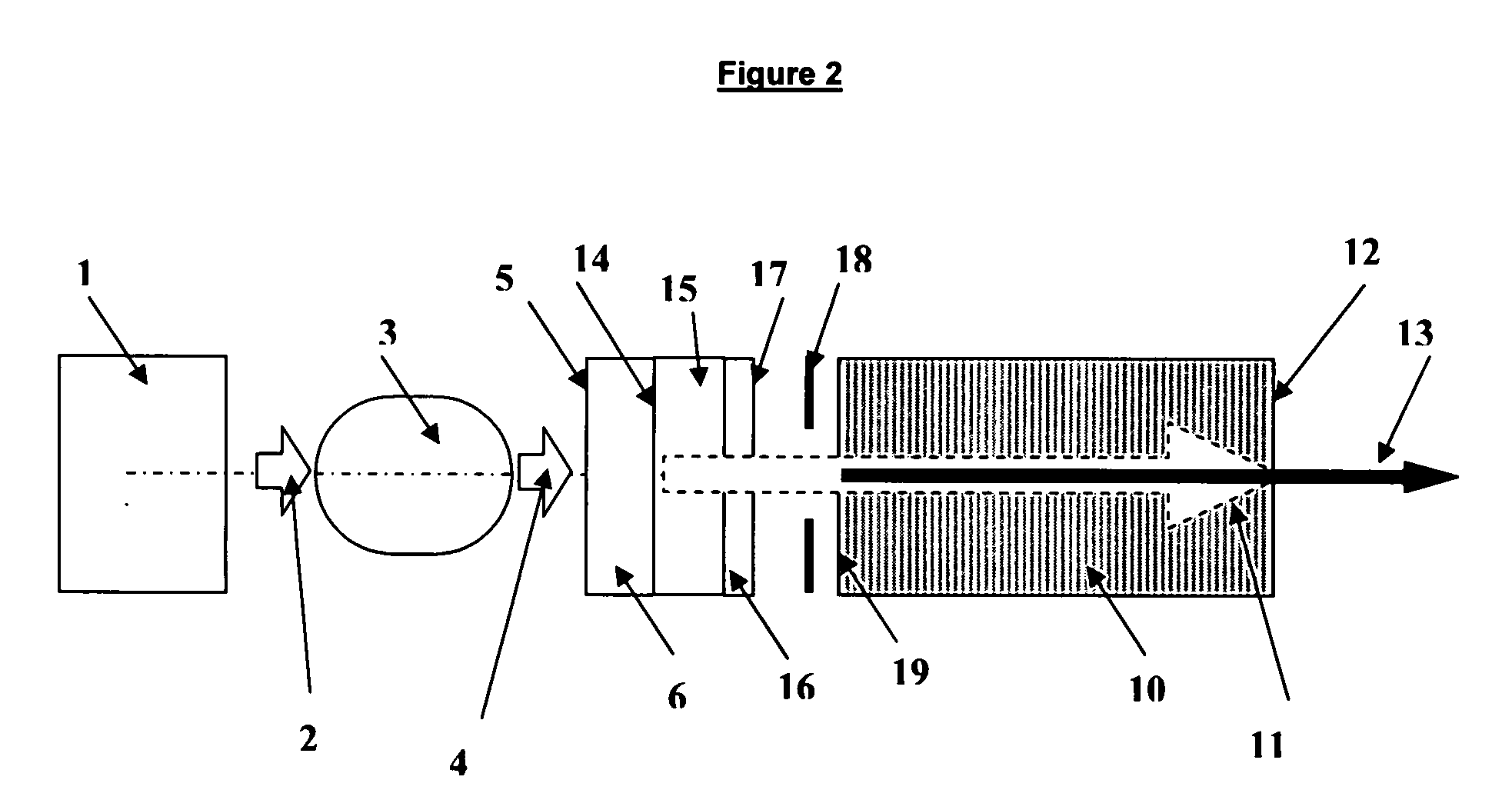Compact solid-state laser
- Summary
- Abstract
- Description
- Claims
- Application Information
AI Technical Summary
Problems solved by technology
Method used
Image
Examples
Embodiment Construction
[0018]FIG. 1 illustrates a preferred embodiment of the present invention. The pump diode laser 1, emits a beam 2, for example, at a wavelength between 800 and 900 nm, such as ˜808 nm or 885 nm for efficient absorption by the gain material (element) 8. The beam 2 is frequently astigmatic and beam-shaping optics 3 are advantageously used to convert the pump beam 2 into the beam 4 so that the beam 4 forms a circular cross-section of the desired diameter on the surface 7 of gain medium 8. This type of pumping arrangement is known in the art and can efficiently overlap the pump area in the gain element with the intracavity circulating beam, which must be a single-spatial mode (or TEM00) for efficient nonlinear frequency doubling. A suitable diameter for the pump spot on the gain element 8 is in the range of 50 to 300 microns. The beam-shaping optics can be a micro-lens, a gradient-index lens, or a combination of such optical elements. When efficiency can be sacrificed in favor of simplic...
PUM
 Login to View More
Login to View More Abstract
Description
Claims
Application Information
 Login to View More
Login to View More - R&D
- Intellectual Property
- Life Sciences
- Materials
- Tech Scout
- Unparalleled Data Quality
- Higher Quality Content
- 60% Fewer Hallucinations
Browse by: Latest US Patents, China's latest patents, Technical Efficacy Thesaurus, Application Domain, Technology Topic, Popular Technical Reports.
© 2025 PatSnap. All rights reserved.Legal|Privacy policy|Modern Slavery Act Transparency Statement|Sitemap|About US| Contact US: help@patsnap.com



